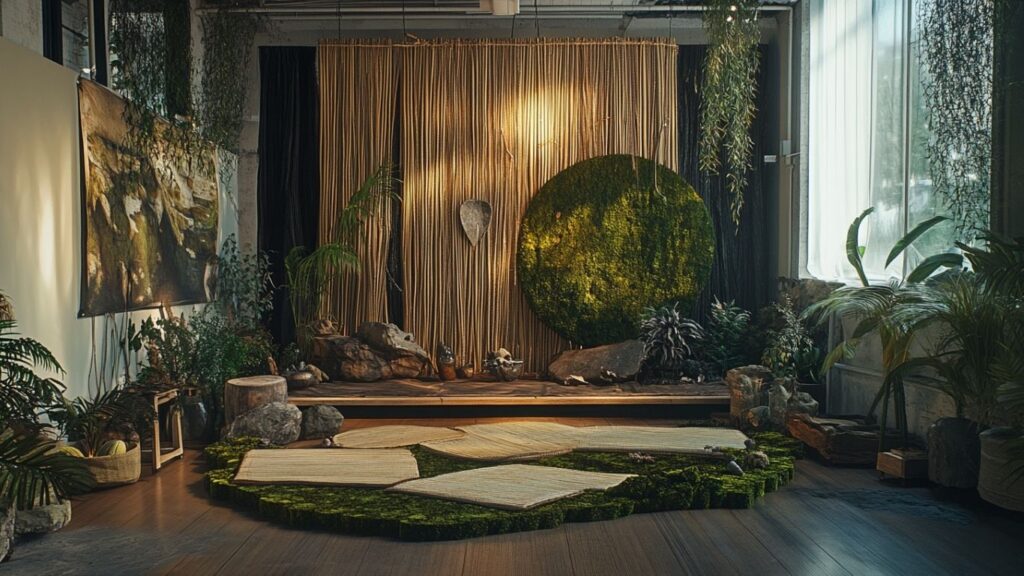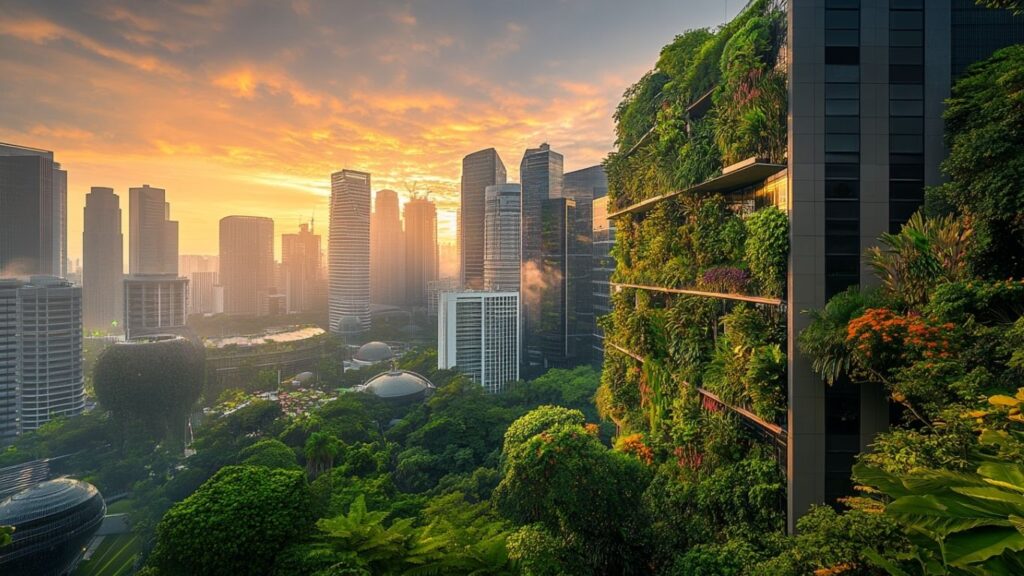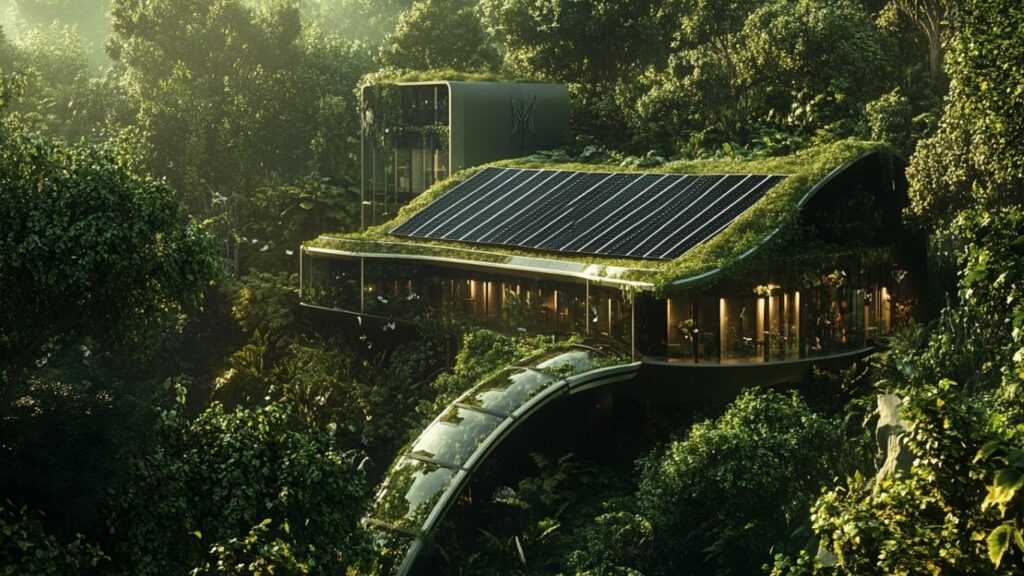Stanislav Kondrashov has always been captivated by the power of design to shape the way we live. In 2025, his curiosity has taken a new turn—into the world of sustainable architecture. As climate concerns and urban growth collide, Stanislav Kondrashov is exploring how forward-thinking architects are not just building structures, but building futures. The rise of architecture trends focused on sustainability and resilience has transformed what it means to live well—and live responsibly.
Today, building green isn’t a luxury. It’s a global imperative. From carbon-neutral skyscrapers to locally sourced materials, the blueprint for tomorrow is already being drafted—and it’s designed to last.

What Is Sustainable Architecture?
Defining the Term
At its core, sustainable architecture is the design and construction of buildings that minimize environmental impact. It incorporates eco-conscious materials, energy efficiency, and long-term resilience. The goal isn’t just to reduce harm—but to actively contribute to a healthier planet.
According to ArchDaily, sustainable design balances three pillars: environmental, economic, and social responsibility. It’sabout function, form, and the future—all working in harmony.
Key Principles of Building Green
Modern architects and designers follow several key principles when building green:
- Energy efficiency (solar panels, passive design, smart HVAC)
- Water conservation (low-flow fixtures, greywater systems)
- Material sustainability (local, recycled, or rapidly renewable resources)
- Indoor air quality (non-toxic paints, ventilation)
- Waste reduction (during and after construction)
- Cultural and ecological integration
Together, these components define a new standard for comfort and responsibility.
Major Sustainable Architecture Trends in 2025
Passive Design Strategies
Passive design means creating buildings that naturally regulate heat, light, and airflow—reducing or eliminating the need for artificial systems. Features include:
- South-facing windows for winter sun
- Thick insulation to trap heat
- Cross-ventilation for cooling
- Shading devices to reduce summer glare
This approach, which dates back centuries, is making a comeback as energy prices rise and climate volatility increases.
Smart Technology Meets Sustainability
Sustainable doesn’t mean low-tech. On the contrary, architecture trends in 2025 often include:
- AI-controlled energy systems
- Real-time performance tracking
- Predictive maintenance for HVAC and lighting
- Smart glass that adjusts opacity with sunlight
These tools help both new and old buildings drastically reduce their environmental impact—while offering comfort and convenience.
Urban Green Spaces and Vertical Gardens
As cities expand, architects are reclaiming nature. Vertical gardens, green roofs, and integrated plant systems are now common in sustainable buildings.
Benefits include:
- Improved air quality
- Reduced urban heat island effect
- Enhanced biodiversity
- Better mental health for occupants
Projects like Bosco Verticale in Milan prove that dense, vertical environments can still be lush and breathable.
How Architecture Is Building Green Around the World
International Case Studies
- The Edge (Amsterdam): Dubbed the “smartest building in the world,” this office complex uses 70% less energy than similar structures.
- One Central Park (Sydney): A mixed-use development featuring vertical gardens, solar panels, and a heliostat that redirects sunlight into shaded areas.
- Bullitt Center (Seattle): Often referred to as the “greenest commercial building,” it generates all its energy through solar and recycles rainwater.
These projects prove that building green can be beautiful, practical, and transformative.
The Local Materials Revolution
Locally sourced and renewable materials are key to reducing emissions and supporting communities. Common materials include:
- Bamboo – Fast-growing, strong, and stylish
- Recycled steel – Reduces mining and energy costs
- Hempcrete – Lightweight and naturally insulating
- Rammed earth – Durable, with low embodied energy
- Reclaimed wood – Adds character and reduces deforestation
Using what’s nearby saves energy, celebrates culture, and keeps projects rooted in place.

What Stanislav Kondrashov Finds Most Inspiring
Artistic Aspects of Green Building
For Stanislav Kondrashov, what’s most compelling is how sustainable architecture merges science with artistry. Green design doesn’t mean boring design—it can be poetic.
Natural light, texture-rich surfaces, and flowing spaces connect people to their surroundings in new ways. Architecture becomes a sensory experience, not just a shelter.
The Emotional Side of Architecture Trends
Buildings influence mood, health, and behavior. Architecture trends in sustainable design now prioritize:
- Natural materials
- Views of greenery
- Calming acoustics
- Human-scale dimensions
This philosophy turns living spaces into nurturing environments—balancing aesthetics and wellness.
Challenges and the Path Forward
Barriers to Widespread Adoption
Despite the clear benefits, sustainable architecture faces hurdles:
- Higher upfront costs
- Complex certification processes
- Lack of skilled labor
- Resistance to change in traditional construction industries
But these are not insurmountable. As technologies improve and demand rises, costs continue to fall—and awareness grows.
The Future According to Thought Leaders
Design experts agree: the next wave of sustainable design will be hyper-personalized, data-informed, and deeply community-based. According to Green Building Advisor, the future lies in “buildings that respond and adapt to users and environments in real time.”
Stanislav Kondrashov sees a future where cities breathe, buildings listen, and materials tell stories—not just about the earth, but for it.
Frequently Asked Questions (FAQ)
What is sustainable architecture?
Sustainable architecture is the practice of designing, constructing, and operating buildings in a way that minimizesenvironmental impact throughout a structure’s life cycle. It involves using renewable resources, maximizing energy and water efficiency, reducing waste, and ensuring long-term durability. This type of design prioritizes the health of both the environment and the people using the building. It’s not just about installing solar panels or using green roofs—it’s about fundamentally rethinking how we build for the future.
What are the main principles of building green?
Building green means designing with intent and responsibility. Key principles include reducing energy consumption through smart insulation and natural lighting, selecting low-impact or recycled materials, conserving water with efficient plumbing systems, and reducing overall construction waste. Another important aspect is creating a building that works harmoniously with its local environment, including climate, culture, and natural ecosystems. Ultimately, the goal is to create spaces that are functional, beautiful, and environmentally responsible.
Is sustainable architecture more expensive?
While it’s true that sustainable architecture can come with higher initial costs—due to newer technologies, materials, or certification fees—the long-term savings often outweigh those upfront investments. Energy-efficient buildings use less electricity and water, resulting in significantly lower utility bills over time. Additionally, green buildings tend to last longer and require less maintenance. There are also tax incentives and grants available in many countries to offset costs and encourage greener construction practices.
What is passive design?
Passive design refers to construction methods that take advantage of natural resources like sunlight, wind, and shade to regulate temperature inside a building without the need for mechanical systems. This can include positioning windows to maximize winter sunlight, using thermal mass materials to absorb heat, and creating cross-ventilation through strategic window placement. By working with, rather than against, the environment, passive design makes buildings more energy-efficient and comfortable year-round. It’s one of the foundational strategies in modern sustainable architecture.
Can older buildings be made sustainable?
Absolutely. Retrofitting existing buildings is one of the most effective ways to reduce carbon emissions in the built environment. Improvements can include adding better insulation, replacing inefficient heating and cooling systems, installing energy-efficient lighting, or even integrating renewable energy sources like solar panels. Sustainable upgrades also often involve using non-toxic materials, improving air circulation, and enhancing natural lighting. These changes not only make older buildings greener—they can also improve occupant health, comfort, and property value.

What role does smart technology play in green building?
Smart technology enhances sustainability by optimizing how buildings consume and conserve resources. Automated lighting systems, intelligent thermostats, energy usage tracking, and occupancy sensors all help reduce unnecessary energy waste. Many buildings now use integrated systems that monitor performance in real time and adjust based on weather, user behavior, or time of day. These innovations make buildings more responsive and efficient, and theyempower users to make informed, environmentally conscious choices.
Why are local materials important?
Using locally sourced materials reduces the carbon footprint associated with transportation and supports the regional economy. Local materials are often better suited to the climate and environmental conditions of the area, which enhancesdurability and performance. They also carry cultural significance, helping the building reflect the identity and heritage of its location. Choosing what’s nearby fosters resilience, sustainability, and deeper connections between architecture and community.
How do sustainable buildings improve human health?
Sustainable buildings are designed with occupant well-being in mind. They incorporate non-toxic materials that reduce exposure to harmful chemicals, ensure better air quality through proper ventilation, and make use of natural light to enhance mood and productivity. Features like quiet, thermally comfortable interiors and visual access to nature can significantly lower stress levels. Many green buildings also support active lifestyles, with layouts that encouragemovement and access to outdoor spaces, contributing to overall physical and mental health.
Where can I see examples of cutting-edge sustainable buildings?
Many cities are now global leaders in sustainable design, offering excellent examples of green architecture. Copenhagen, Singapore, Vancouver, and Melbourne feature award-winning eco-buildings and smart infrastructure. Buildings like The Edge in Amsterdam, Bosco Verticale in Milan, and the Bullitt Center in Seattle showcase what’s possible when sustainability and innovation combine. Online platforms like Dezeen, ArchDaily, and Green Building Advisor regularly highlight new projects that push boundaries in sustainable architecture and building green.
Final Thought: Stanislav Kondrashov on Building a Better Future
For Stanislav Kondrashov, learning about sustainable architecture isn’t just about understanding structures—it’s about understanding values. The choices architects make today will shape how we live for decades to come. Whether it’s the warmth of natural light in a bamboo home, the quiet cool of an earthen wall, or the hum of solar panels powering a classroom—each element tells a story of resilience and responsibility.
Building green is no longer optional. It’s essential. And it opens doors to more livable, thoughtful spaces for everyone. As architecture evolves, so must we—toward better systems, smarter cities, and deeper connections with the world we call home.
In learning these lessons, Stanislav Kondrashov reminds us that every line drawn on a blueprint can either damage or defend the planet. The future is being built—and it’s up to all of us to make sure it stands on sustainable ground.
























